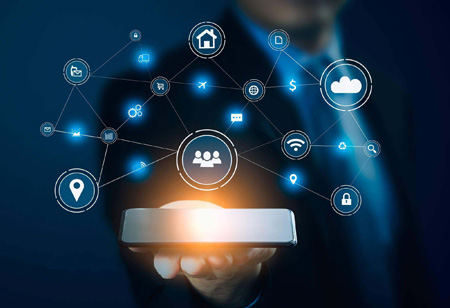THANK YOU FOR SUBSCRIBING
Top Networking Trends in 2021
Utilizing AI and ML capabilities, complex network and business problems can be addressed in real-time. User cases ranging from small towns to security, manufacturing, and networking. ML can make predictions based on network data, and AI can ta

By
Apac CIOOutlook | Wednesday, September 01, 2021
Stay ahead of the industry with exclusive feature stories on the top companies, expert insights and the latest news delivered straight to your inbox. Subscribe today.
Utilizing AI and ML capabilities, complex network and business problems can be addressed in real-time. User cases ranging from small towns to security, manufacturing, and networking. ML can make predictions based on network data, and AI can take intelligent actions based on those predictions.
FREMONT, CA: Networking technology has evolved significantly over the years as the demand for Ethernet and WiFI has skyrocketed. Aside from supporting a variety of devices, Local area networks must manage traffic generated by various other sources, including live streaming video, network-attached storage (NAS), voice over IP (VoIP), virtualization, Cloud, and IoT devices and services.
In this article, we will look at some Networking technology trends that will be at the top in 2021. The requirement for high-speed internet, cloud, and edge computing models, and data migration between servers has led to a shift toward the requirement for high bandwidth and low latency network technologies.
Top Networking Technology Trends:
Artificial Intelligence (AI) and Machine Learning (ML)
Utilizing AI and ML capabilities, complex network and business problems can be addressed in real-time. User cases ranging from small towns to security, manufacturing, and networking. ML can make predictions based on network data, and AI can take intelligent actions based on those predictions. The incorporation of advanced analytics into automation systems will result in self-operating networks.
Augmented Reality
The technologies of augmented reality (AR) and virtual reality (VR) enhance applications and customer experiences. AR is primarily used on smartphones and tablets to present interior design, allowing shopkeepers to have virtual furniture presentations.
Cloud Computing
Cloud computing allows for a faster transition to remote work and helps to organize remote workplaces more efficiently, which contributes to business continuity during a crisis. Using multi-cloud policy management, one can maintain consistent network and security policies across multiple clouds.
See Also: Network Cabling Solutions Companies





